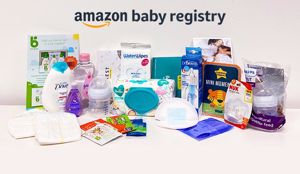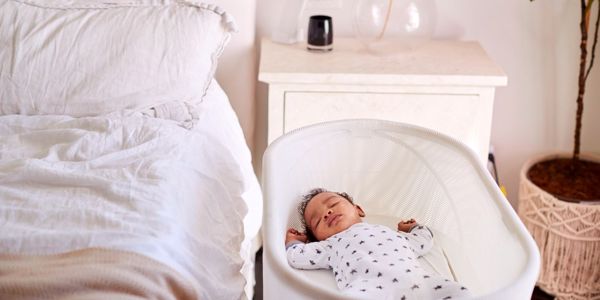As a health professional and a sleep expert, I know that one of the most important things parents can do to keep their newborns safe is to ensure they sleep in a safe environment. Safe sleep is critical for your baby's health and well-being, and it is crucial to follow safe sleep guidelines to reduce the risk of Sudden Infant Death Syndrome (SIDS). In this article, I will provide some guidelines for safe sleep for newborn babies to help new parents make informed decisions about their baby's sleep environment.
What is SIDS?
SIDS is the sudden and unexplained death of a healthy baby. Although the exact cause of SIDS is still unknown, research has shown that certain risk factors can increase the likelihood of SIDS, including placing babies to sleep on their stomachs or sides, soft bedding, and bed-sharing.
Safe Sleep Guidelines for Newborns
The American Academy of Pediatrics (AAP) recommends the following safe sleep guidelines for newborns:
Back to Sleep
The safest position for your baby to sleep in is on their back. This position helps to reduce the risk of SIDS by keeping your baby's airway clear and reducing the likelihood of overheating. It is essential to place your baby on their back every time they sleep, including for naps.
Firm Sleep Surface
It is important to place your baby on a firm and flat sleep surface, such as a crib or bassinet. Soft surfaces such as adult beds, couches, or chairs can increase the risk of suffocation, strangulation, and entrapment.
Room Sharing
The AAP recommends that parents share a room with their newborn for at least the first six months of life, ideally for the first year. This practice can help reduce the risk of SIDS by providing close proximity to the baby and making it easier to monitor their breathing.
No Bed-Sharing
Bed-sharing, also known as co-sleeping, is when a parent shares a bed with their baby. I do not personally recommend this practice as it can increase the risk of suffocation, strangulation, and entrapment. If you want to keep your baby close to you while sleeping, consider using a bedside bassinet or a separate sleep surface that attaches to your bed.
Avoid Soft Bedding
Soft bedding, such as blankets, pillows, and stuffed animals, can pose a risk to your baby's safety by increasing the risk of suffocation, entrapment, and strangulation. Instead, dress your baby in a sleep sack or wearable blanket to keep them warm and comfortable.
Avoid Overheating
Overheating can also increase the risk of SIDS. Make sure your baby's sleep environment is kept at a comfortable temperature, and avoid using too many layers or heavy blankets. Dress your baby in light layers and use a lightweight, breathable blanket if necessary.
Avoid Smoke Exposure
Exposure to smoke, whether in utero or in the environment, can increase the risk of SIDS. Keeping your baby away from cigarette smoke and avoiding smoking yourself is essential.
Breastfeed Your Baby
Breastfeeding has been shown to reduce the risk of SIDS. If possible, try to breastfeed your baby, as it can provide numerous benefits to their health and well-being.
Follow Safe Sleep Practices Outside the Home
It is also essential to follow safe sleep practices when traveling or when your baby is in someone else's care. Make sure your baby's sleep environment is safe and follows the above guidelines.
In conclusion, safe sleep is critical for your baby's health and well-being. By following the above safe sleep guidelines, parents can reduce the risk of SIDS and provide a safe sleep environment for their newborns. Remember, always place your baby on their back to sleep, use a firm and flat sleep surface, avoid bed-sharing, and keep the sleep environment free of soft bedding and other hazards.
It is also important to note that safe sleep guidelines may vary depending on your baby's age and developmental stage. As your baby grows, their sleep needs and preferences may change, and it is essential to adjust their sleep environment accordingly. Consult with your healthcare provider or a sleep specialist if you have any concerns or questions about your baby's sleep habits.
Finally, it is important to prioritize your own sleep as a parent. Sleep deprivation can have a significant impact on your mental and physical health, and it can also increase the risk of accidents and injuries. Make sure to take care of yourself by getting enough sleep, asking for help when needed, and creating a safe sleep environment for both you and your baby.
Safe sleep is crucial for your newborn's health and well-being. By following the above safe sleep guidelines, parents can reduce the risk of SIDS and provide a safe sleep environment for their baby. Remember to always place your baby on their back to sleep, use a firm and flat sleep surface, avoid bed-sharing, and keep the sleep environment free of soft bedding and other hazards. Prioritize your own sleep as a parent and consult with your healthcare provider or a sleep specialist if you have any concerns or questions about your baby's sleep habits. By working together to create a safe sleep environment for your baby, you can ensure that they get the restful and rejuvenating sleep they need to grow and thrive.







